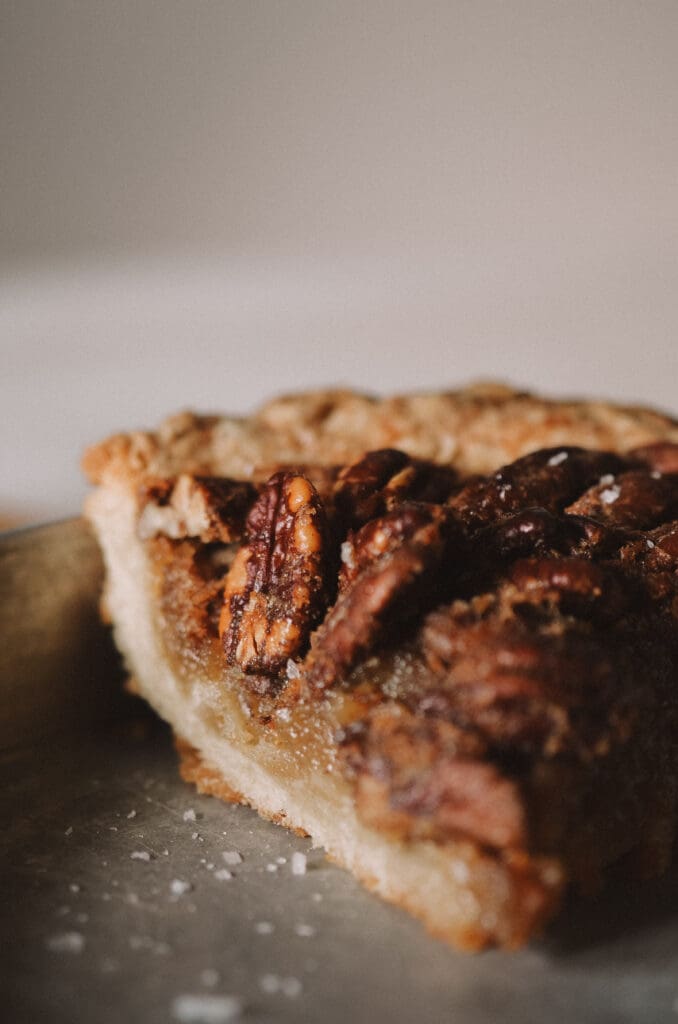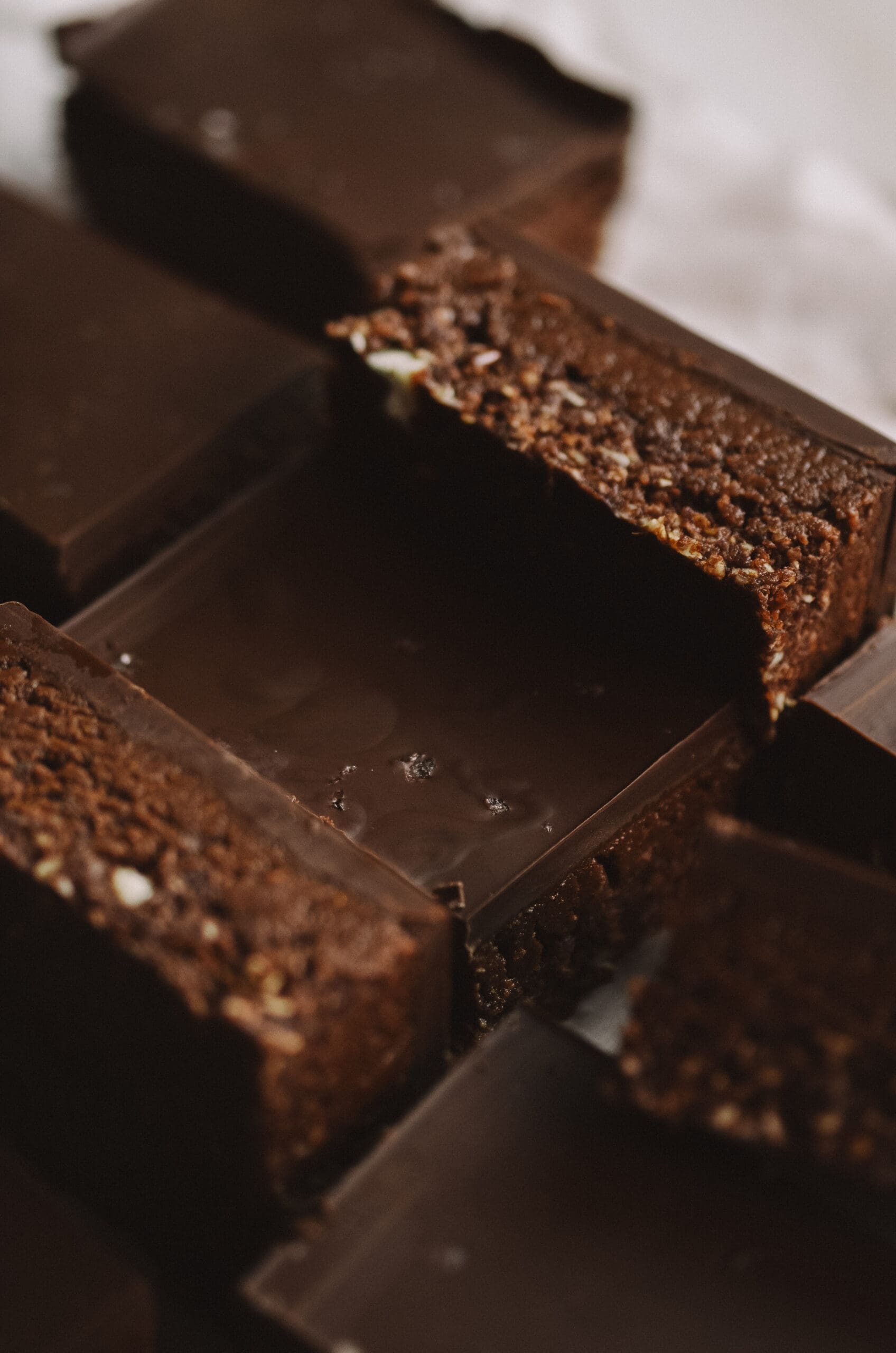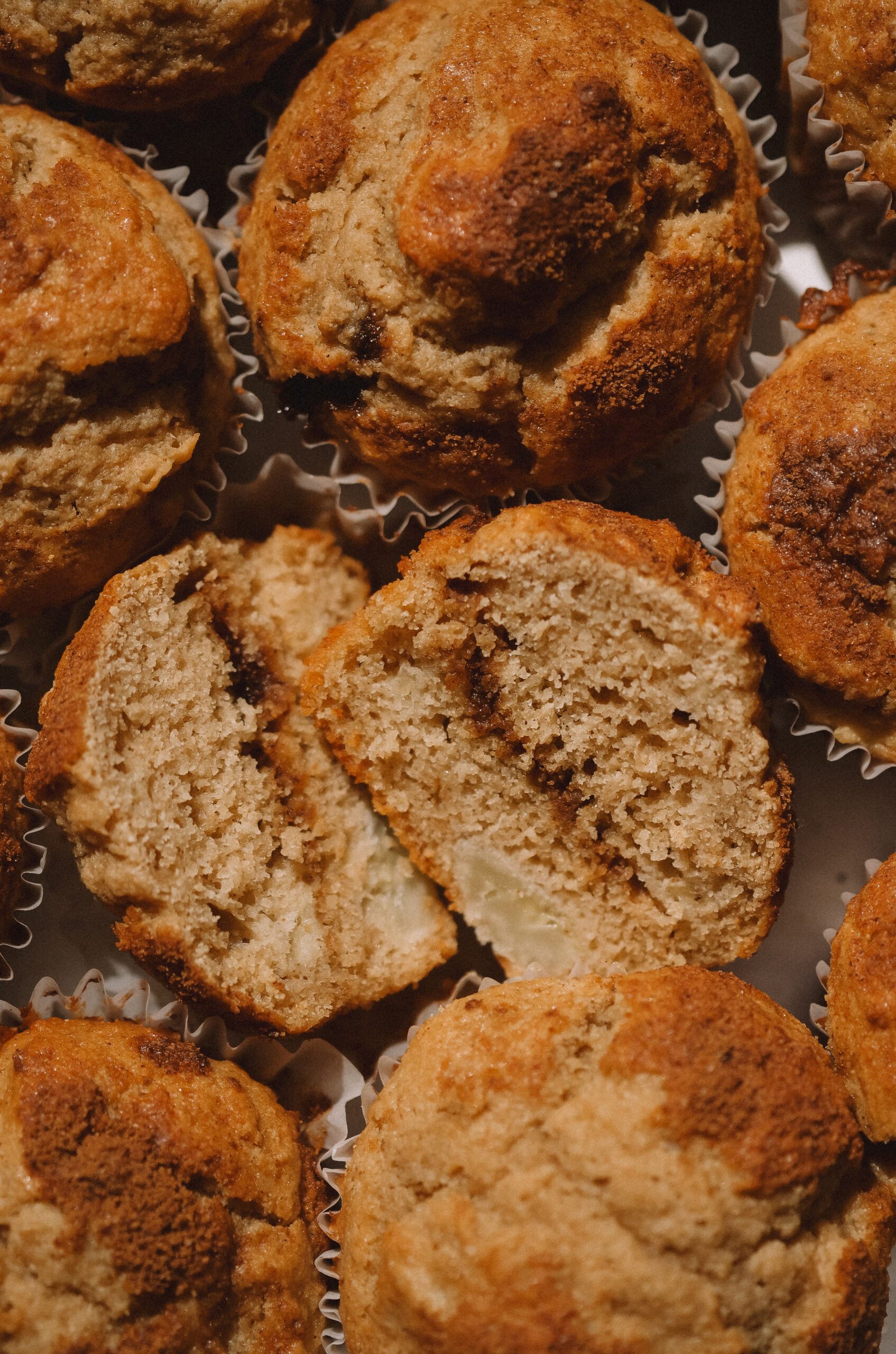Prep time: 15 minutes + 90 minutes chill
Bake time: Varies *see notes
Yield: 2 individual pie crusts
My kind of pie crust is easy. Tasty? Definitely. Flaky? Yes, but not falling apart. Above all, it’s not complicated. And of course, it’s a perfect way to use up any sourdough discard.
I’ve been making this pie crust for 4 years now & while it’s been through a few variations, it’s never failed me. I will say, it’s a lazy way to make pie, but it works really well. So if you’re looking for a quick homemade pie crust that’s hard to mess up, this recipe IS for you.

sourdough starter in pie crust?
It might sound a little weird. I hear ya. But it’s actually one of my favorite ways to use up the absurd amount of sourdough discard on my hands. Adding discard to a pie crust, both sweet & savory, can create a complex flavor with a sorta tangy bite. Nothing overpowering though. It makes you go “oh, that’s different, but in a good way.” Aside from taste, the wild yeasts from your starter help to break down the glutenous flour. If you’re sensitive to gluten, this could make it easier for you to digest. And… we can’t forget the fact that we’re limiting waste by using up the discard that would have ended up in the trash. It’s really a win-win.
let’s talk butter
Like many traditional pie crusts, this recipe uses butter. But for years, I used ghee & coconut oil – it was great! I recently switched to butter for this recipe only because I was in search of that delicate flakiness that bakery-style pies have. And to be honest, ghee & coconut oil don’t quite create the same effect. If that’s not a care of yours though, feel free to substitute the butter with: 175g ghee + 58g of coconut oil. It’s delicious nonetheless. Just make sure the ghee is solid, coming straight from the fridge & the coconut oil is only slightly soft, not melted at all. Oh & work quick! Ghee softens much faster than butter.
sourdough pie considerations
Plan ahead: Decide which day you want to make the pie crust because you’ll need to collect your ripe sourdough discard ahead of time to let it chill in the fridge well before you use it. Sure, you can condense this all in one day. But my recommendation is to collect sourdough discard the day before when you feed your sourdough starter. Measure the amount you need & place it in the fridge overnight, or until you’re ready to prep your pie. It can hang out in the fridge for a while 🙂
Do I need to chill the discard? Not at all. You can use ripe discard straight into your mixture but because it’s active, it will add a stronger flavor. Refrigeration puts the starter into hibernation, bringing a milder flavor to your recipe.
Prepare the crust in advance: Once you’ve rolled out your dough, you can rest in the fridge for up to 12 hours before you intend to bake it. So, you could make the dough the night before you plan to bake, saving you time the day of! Notes are included in the steps below to walk you through this.
Freezing pie crust: If you wanna get REALLY ahead of the ball, another option is to place your pie crust in a freezer bag & store it for later. I’ve seen people freeze it for up to 6 months but personally, I wouldn’t go more than 3. When you’re ready to use it, thaw your dough in the refrigerator overnight – 24 hours (this will take some time) then roll the dough out & follow the steps below per usual.
Use all-purpose flour: A low-protein flour will help create a tender crust that’s not dense or gummy. I’ve been using Cairnspring Mills’ Organic Edison T85 for my pie crusts since the start. It’s incredibly light for a stone-milled flour & gives a buttery feel. If you’d like to try, you can use my code MCKENNA15 for 15% off any of their flours.

equipment
*links below are products I use & love
pie plate
spatula
large mixing bowl
clean work surface
bench knife
kitchen scale
ingredients
360g all-purpose flour
235g sourdough starter discard, cold & ripe
200g unsalted butter, cold
33g coconut oil, cold
17g coconut sugar
80g cold water, plus more if needed
7g sea salt
steps
In a large bowl, mix together the flour, sugar, salt.
Prep the butter: Cut the butter into small 1/2-inch squares then add it to your bowl. Lightly coat the butter with flour, take a pastry blender (your hand or fork will work fine too) & break up the butter until it’s about the size of small pebbles. *NOTE – It’s okay if there are larger chunks of butter here & there.
Add the discard & water: Once the butter has been broken up, add the sourdough & water. Using a spatula, mix everything together for a minute or two. You should notice the dough coming together but it will look a little dry, that’s ok! The dough should stick together but not be mushy. *NOTE – If it’s not sticking together, add 1 Tbsp of water then mix. Continue adding 1 Tbsp of water at a time until all of the dough holds.
Dust a clean work surface with a little flour. Place the dough on your surface & knead the dough into one large disc.
Using a knife, cut the disc in half. Reshape each half into its own disc, this will help preshape your dough into the desired pie crust. Set aside. *NOTE – If you’d like to freeze one or both of your pie crusts, place your covered dough in a freezer bag to store until later use.
Place a piece of parchment paper down on your clean work surface (bigger than what your pie will be when it’s rolled out). Generously dust it with flour & place one disc on your parchment paper.
Roll the dough: Lightly flour your rolling pin & begin to roll the dough to your preferred pie shape. For reference, the diameter of my pie crust measures about 12 inches wide but to be sure it fits your specific dish, flip your pie plate upside down & place it over your dough. Your pie crust should at least extend to all edges of your pie plate. *NOTE – if you want to fold the edges of your pie crust over the top of your filling, roll your dough so it extends beyond the edges of your pie plate.
Chill: Once you’ve rolled the right size, cover your pie with plastic wrap & place the discs in the fridge for an hour & a half (90 minutes). Repeat for the second disc. *NOTE – You can leave your dough in the fridge for up to 12 hours, just be sure it’s well covered or it’ll dry out.
Place in baking dish: After your crust has chilled, remove it from the fridge & uncover the wrap. From here you have two options:
Option 1: Place both the parchment paper & pie crust into your dish. Gently press your pie crust down, molding it into the shape of your dish.
Option 2: Remove the pie crust from the parchment paper. You can MacGyver this however you’d like but here’s what I have found helpful: Place a flat spatula in the freezer for a few minutes (make sure your pie crust is in the fridge during this otherwise the butter may start to soften). When ready, take it out & lightly dush a flat spatula with flour. Take out your pie crust, remove the plastic, & using your spatula, go under the edges of your pie crust, gently lifting it up from the paper. Once you’ve gone around once, dig your spatula a little deeper, lifting up the center of your pie crust. Again, go around the entire disc. At this point, it should be free from the parchment paper in one piece. Using both hands, lift your pie crust & place into your dish. Mold it to fit the shape of the plate. *NOTE – This may seem like a lot of work, but I promise it’s pretty easy. This is my preferred method as I like to take pictures without the parchment paper lol, but NOT necessary.
Baking: At this point, your pie crust is ready to be filled & baked! Generally, I like to bake a sourdough pie at 400F for 15 minutes then bring the temp down to 350F, baking for another 45-55 minutes. This will depend on your filling, so be sure to look at the filling recipe, but, sourdough likes it hot! So, I do recommend the first 15 minutes at a higher temp to help your crust puff up.
sourdough pie FAQ’s
What if my pie dough is crumbly? Your dough shouldn’t be mushy, but it should hold together before you shape it. If you find there are crumbs everywhere, add 1 Tbsp of water at a time until it comes together. Different flours may absorb more water, making it a bit tricky to pinpoint.
What if the butter melts while I’m rolling the dough? Just pause where you’re at, cover with plastic & place it in the fridge for 15-30minutes to help it firm up again.
I thought you should roll the dough after it’s chilled? You can! I find it’s preference. I prefer to roll the dough before chilling because my pies have cracked too many times before. If you want to roll it after chilling, just cover the individual discs with plastic wrap before chilling, then when you’re ready to roll it out, let the dough come to room temp for 5 minutes before rolling.







Love, love your sourdough!
Thanks for sharing this! 🤗
xoxo, 🤍